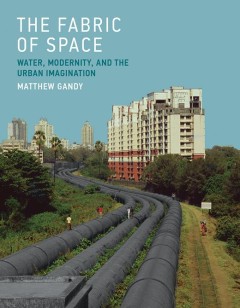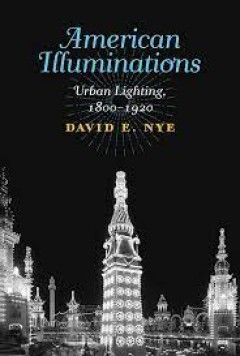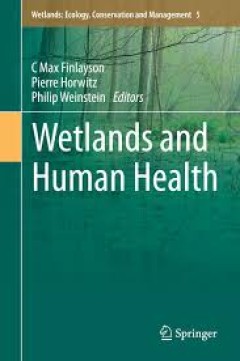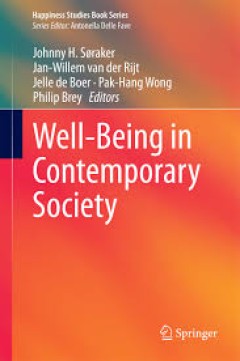Filter by

The fabric of space: Water, modernity, and the urban imagination
Water lies at the intersection of landscape and infrastructure, crossing between visible and invisible domains of urban space, in the tanks and buckets of the global South and the vast subterranean technological networks of the global North. In this book, Matthew Gandy considers the cultural and material significance of water through the experiences of six cities: Paris, Berlin, Lagos, Mumbai, …
- Edition
- -
- ISBN/ISSN
- 9780262321761
- Collation
- -
- Series Title
- -
- Call Number
- -

American illuminations :urban lighting, 1800-1920
How Americans adapted European royal illuminations for patriotic celebrations, spectacular expositions, and intensely bright commercial lighting to create the world's most dazzling and glamorous cities.Illuminated ftes and civic celebrations began in Renaissance Italy and spread through the courts of Europe. Their fireworks, torches, lamps, and special effects glorified the monarch, marked the …
- Edition
- -
- ISBN/ISSN
- 9780262344784
- Collation
- 1 online resource (x, 280 pages)
- Series Title
- -
- Call Number
- -

Sharing knowledge shaping Europe U.S technological collaboration and nonproli…
How America used its technological leadership in the 1950s and the 1960s to foster European collaboration and curb nuclear proliferation, with varying degrees of success.OCLC-licensed vendor bibliographic record.
- Edition
- -
- ISBN/ISSN
- 9780262336413
- Collation
- 1 online resource.
- Series Title
- -
- Call Number
- -

Wetlands and Human Health
The book addresses the interactions between wetlands and human health and well-being. A key feature is the linking of ecology-health and the targeting of practitioners and researchers. The environmental health problems of the 21st Century cannot be addressed by the traditional tools of ecologists or epidemiologists working in their respective disciplinary silos; this is clear from the emergence…
- Edition
- -
- ISBN/ISSN
- 978-94-017-9609-5
- Collation
- -
- Series Title
- -
- Call Number
- -

Well-Being in Contemporary Society
This anthology examines the practical role of well-being in contemporary society. It discusses developments such as globalization, consumerism and the rapid innovation and use of new and emerging technologies and focuses on the significant impact of these developments on the well-being of people living today. The anthology brings together researchers from various disciplines, including psycholo…
- Edition
- -
- ISBN/ISSN
- 978-3-319-06459-8
- Collation
- -
- Series Title
- -
- Call Number
- -

Winds of doctrine :studies in contemporary opinion
"In a few hundred pages Santayana endeavors to sum up the dominant intellectual currents of early twentieth-century thought and trace their implications for American culture, for ethics and religion, for arts and letters, and for philosophy"--OCLC-licensed vendor bibliographic record.
- Edition
- Critical edition.
- ISBN/ISSN
- 9780262377324
- Collation
- 1 online resource.
- Series Title
- -
- Call Number
- -

Job crafting
"A guide for managers to make their organizations more conducive to job crafting by employees"--OCLC-licensed vendor bibliographic record.
- Edition
- -
- ISBN/ISSN
- 9780262378024
- Collation
- 1 online resource.
- Series Title
- -
- Call Number
- -

Properties of life :toward a theory of organismic biology
"Presents a synthesis of specific properties of living organisms as they can be described by modern research in order to generate a coherent theory of life"--OCLC-licensed vendor bibliographic record.
- Edition
- -
- ISBN/ISSN
- 9780262375399
- Collation
- 1 online resource.
- Series Title
- -
- Call Number
- -

Notebooks of a wandering Monk
"Originally published as Carnets d'un moine errant. Allary ?Editions, 2021.""The memoirs of Matthieu Ricard, one of the the world's most famous Buddhist monks who has captured the minds and hearts of people around the globe"--OCLC-licensed vendor bibliographic record.
- Edition
- -
- ISBN/ISSN
- 9780262375641
- Collation
- 1 online resource
- Series Title
- -
- Call Number
- -

Tenacious beasts :animals back from the brink
"Conventional wisdom is that wild animals are being wiped out. But conventional wisdom skips some important details. Wildlife is rebounding. Not everywhere. Not every species. But a handful of wildlife populations have reached numbers unimaginable in a century. Red deer in Europe, bison in North America, humpback whales in the Atlantic. They have all seen their populations explode. They are bac…
- Edition
- -
- ISBN/ISSN
- 9780262372558
- Collation
- 1 online resource
- Series Title
- -
- Call Number
- -
 Computer Science, Information & General Works
Computer Science, Information & General Works  Philosophy & Psychology
Philosophy & Psychology  Religion
Religion  Social Sciences
Social Sciences  Language
Language  Pure Science
Pure Science  Applied Sciences
Applied Sciences  Art & Recreation
Art & Recreation  Literature
Literature  History & Geography
History & Geography